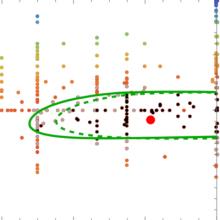
Description
LIGO has identified gravitational waves (GWs) from coalescing black hole binaries, initiating a revolution in astrophysics. Reliable measurements about these previously-unseen events will allow astrophysicists to infer the processes responsible for forming them, and to test general relativity. The main thrust of this project is to perform comparisons of the best available solutions of Einstein's theory (large-scale supercomputer simulations) and current approximations used to estimate the parameters of the binary systems, such as masses, spins, orbital eccentricity, etc. Numerical relativity solutions will be used to remove bias and reduce systematic errors in the estimation of these parameters from data observed by LIGO. Accurate knowledge of these parameters will lead to a greater understanding of the processes that formed these binary systems and the history of their corresponding stellar progenitors.
The major theme of this project is the interpretation of gravitational wave observations of binary black holes, as measured using LIGO data. The PI's group will help produce these distributions and the associated science. The principal method at present to infer the properties of coalescing black holes relies on approximate solutions of Einstein's equations, whose limitations will bias astrophysical inferences about individual events and populations. Thus, to enable this core activity, this group will directly and indirectly compare LIGO data to numerical relativity simulations of binary black hole coalescence and will perform inference using several models in parallel, including multimodal surrogate models tuned to numerical relativity, to draw the sharpest possible conclusions and assess the systematic error. Additionally, the group will extend underlying parameter estimation strategy used in this approach. For example, by using Gaussian process interpolation of the likelihood function to make the inferences more robust and to assess their error. They will also develop a hierarchical strategy for targeting numerical relativity followup simulations and incorporating them into the parameter and systematic error estimates. These techniques will be apply to perform tests of general relativity using multiple modes excited during the merger, particularly as excited coherently during the coalescence of precessing binary black holes.